Previously: RIBOCA review. A disturbingly tangible Anthropocene.
Second part in my overview of Everything was forever until it was no more, the first edition of Riga International Biennial of Contemporary Art (aka RIBOCA) which closed a couple of months ago.
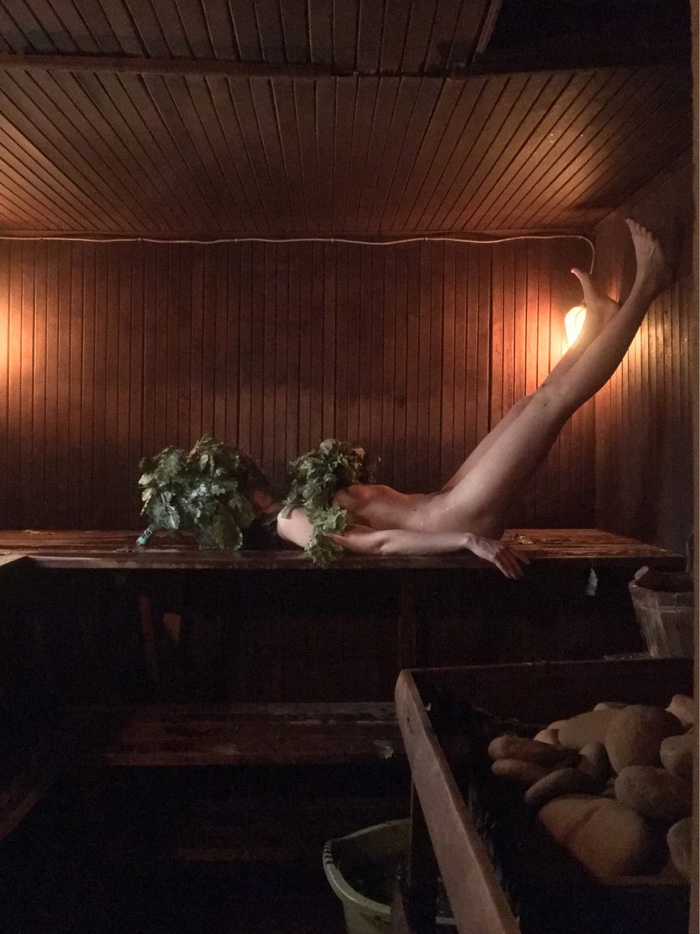
Sasha Huber + Petri Saarikko, Dziedināšana Remedies, 2018
The artists invited by curator Katerina Gregos investigate change. In particular, how change, because of its relentless speed and much proclaimed inevitability, seems to escape robust critical scrutiny. Some of the main sub-themes of the biennial looked at issues as vast as our flawed relationship to other living species, the negotiation of collective historical memory in post-Soviet regions or the impact of unseen technologies on landscapes and society. I only had a couple of hours to visit the exhibitions but even as was reading the catalogue on the way back home, i had to admit that it was a lot to take in for a sole event.
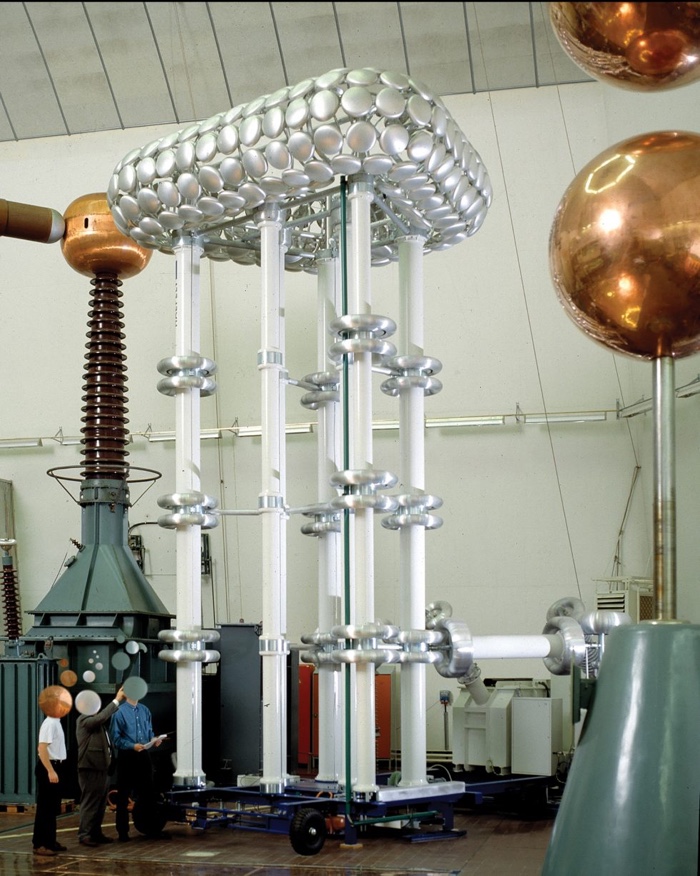
Kerstin Hamilton, A World Made by Science, 2018
Still, RIBOCA turned out to be one of the highlights of 2018 for me. I discovered new artists, new perspective on Baltic states, was intellectually stimulated and eavesdropped on heated discussions about the private Russian funding of the biennial (only a few years after the annexation of the Crimea had put strain on the relationships between Russia and formerly Soviet Baltic states.) I also admired the way each exhibition, no matter how wide-ranging its focus, anchored itself firmly in the historical and architectural context of Riga.
Here are some of the most exciting works (for me):
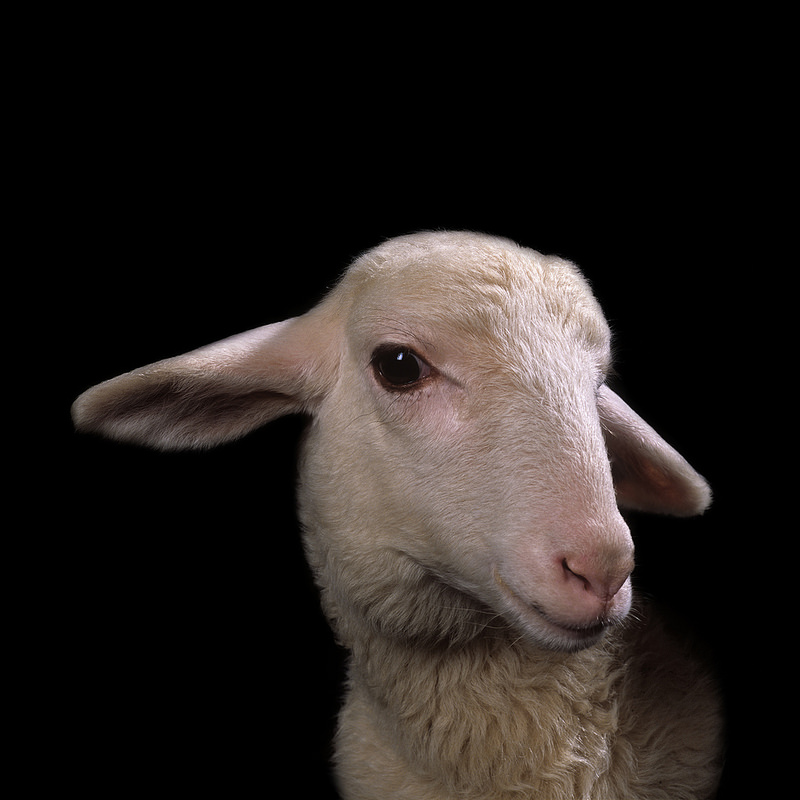
Nabil Boutros, Ovine Conditions (Celebrities), 2014
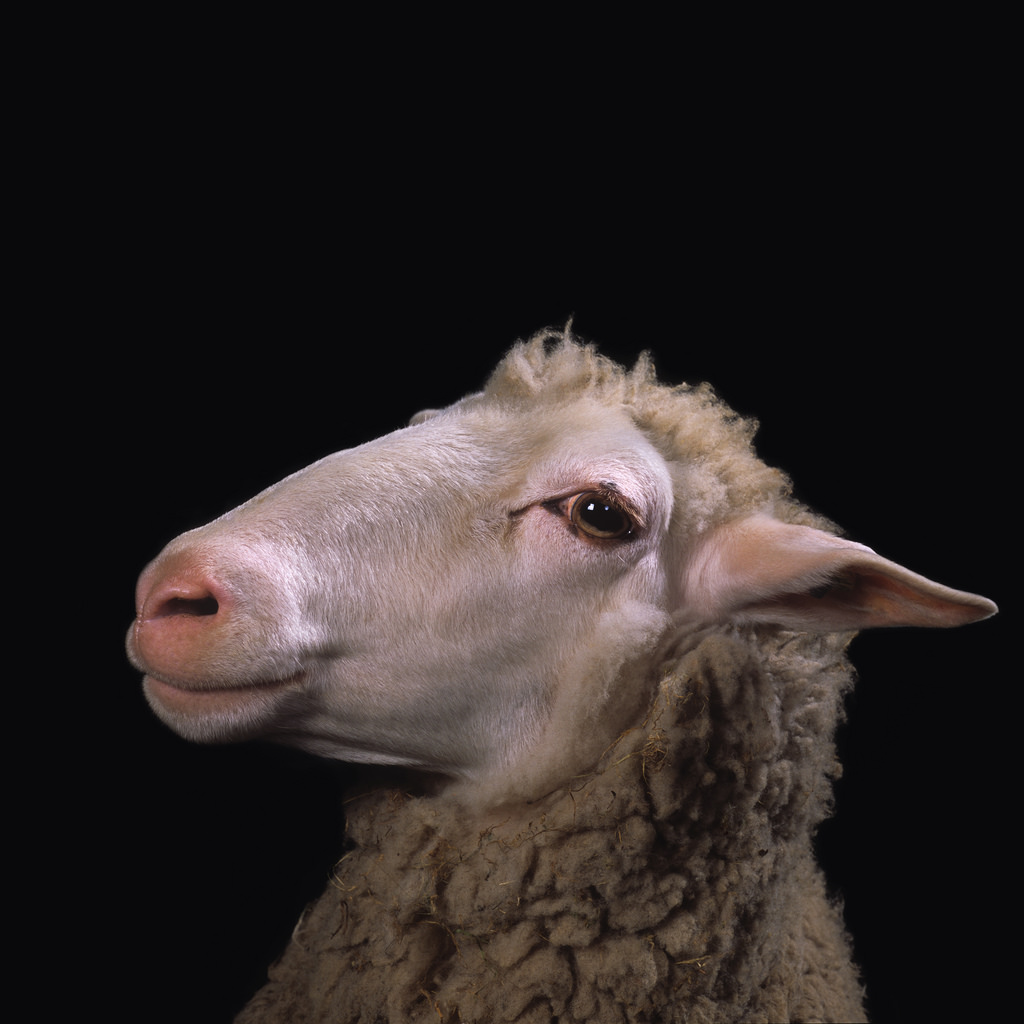
Nabil Boutros, Ovine Conditions (Celebrities), 2014
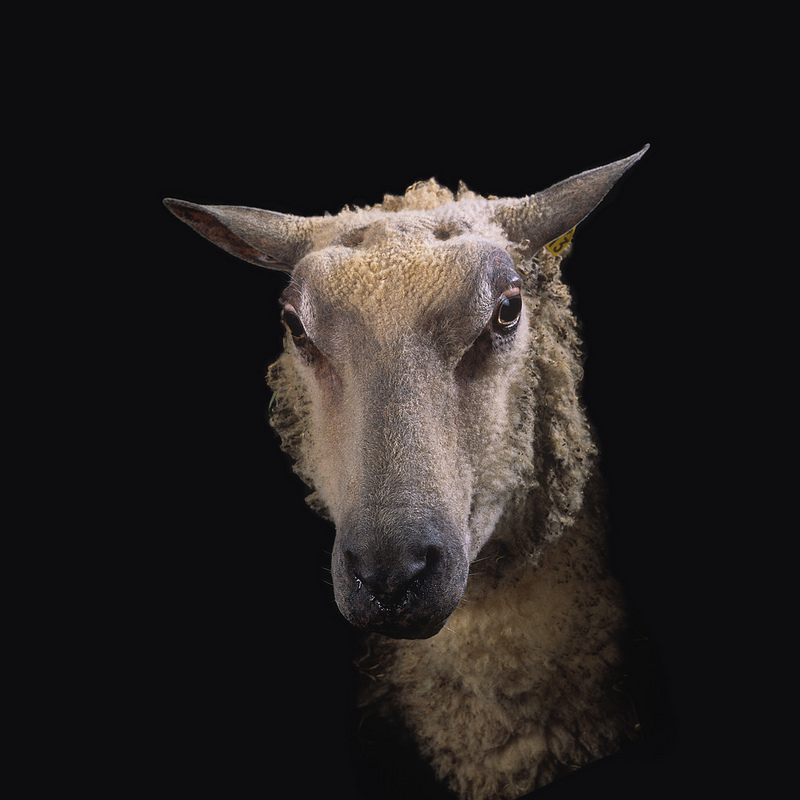
Nabil Boutros, Ovine Conditions (Celebrities), 2014
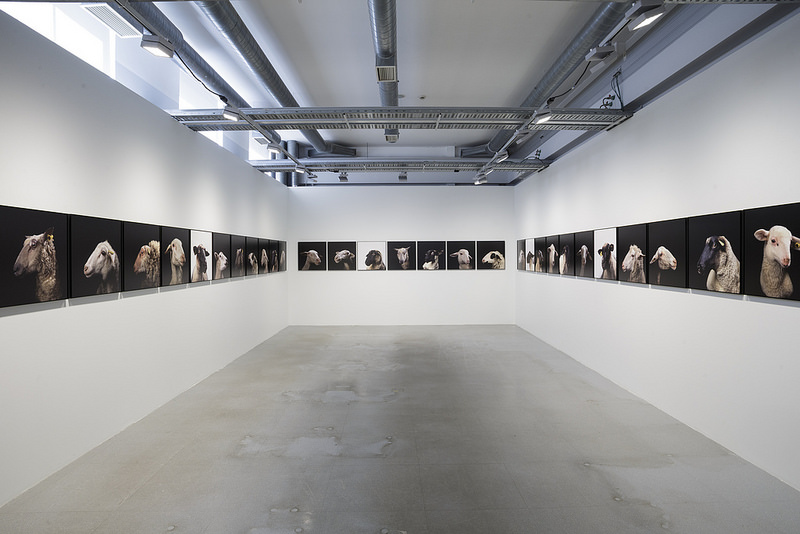
Nabil Boutros, Ovine Conditions (Celebrities), 2014. Exhibition view. Photo: Andrejs Strokins
We tend to regard individual animals, especially the ones we turn into food and consumer goods, as mutually interchangeable within a herd. All cows become the same, as do pigs and sheep. We rarely consider their sentience: what they think and feel or the nature of their inner world. To us they are mindless animals. Something similar happen to human animals once they are part of a crowd: they are said to adopt a ‘herd mentality’.
As Nabil Boutros‘s portraits demonstrate sheep, like human beings, regain their individual character when separated from the flock. He photographed sheep, lambs and rams, as if they had commissioned these portraits themselves. Each animal’s distinct features and individuality then becomes apparent.
It becomes impossible, in front of these portraits, not to ascribe psychological features of human beings to the individual animals. They appear confident or insecure, modest or cheeky, anxious, surprised, inquisitive, thoughtful, upset, arrogant, withdrawn, excited, seductive, etc.
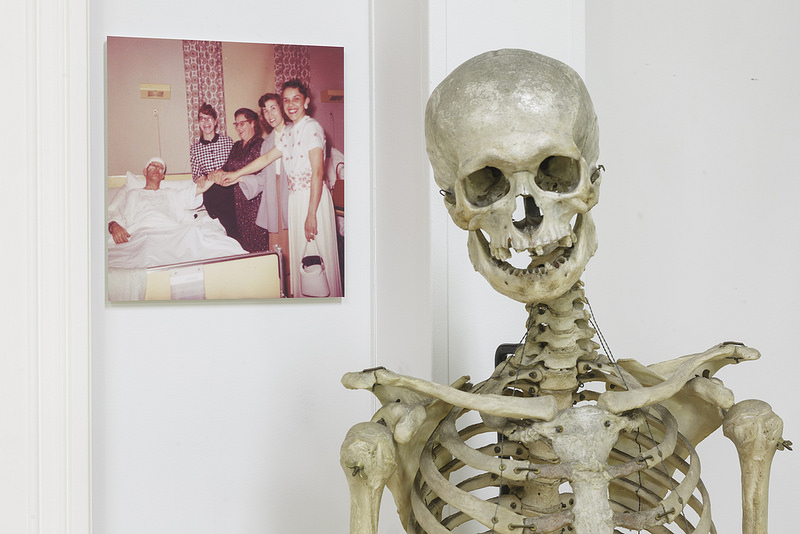
Erik Kessels, The Human Zoo, 2018. The Former Faculty of Biology of the University of Latvia. Photo: Andrejs Strokins
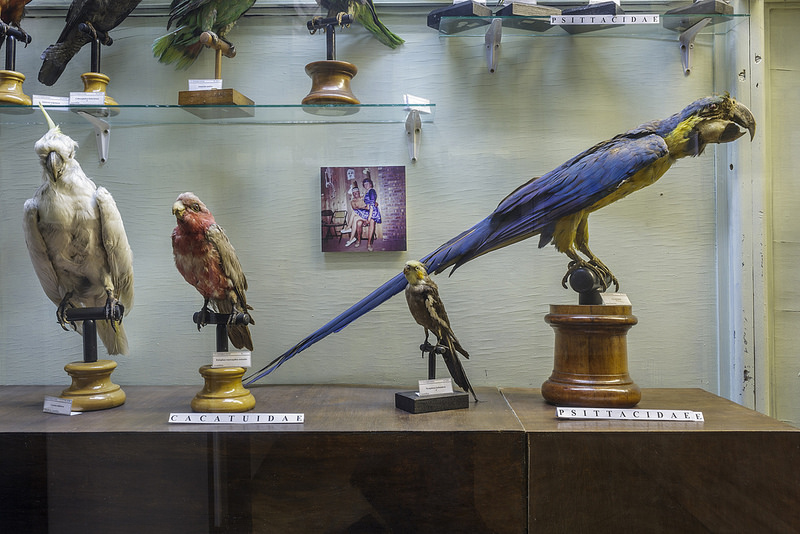
Erik Kessels, The Human Zoo, 2018. The Former Faculty of Biology of the University of Latvia. Photo: Andrejs Strokins
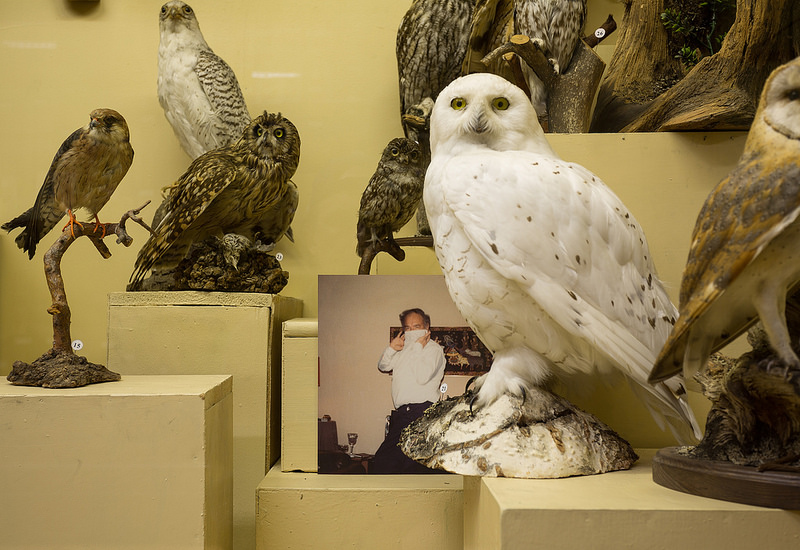
Erik Kessels, The Human Zoo, 2018. The Former Faculty of Biology of the University of Latvia. Photo: Andrejs Strokins
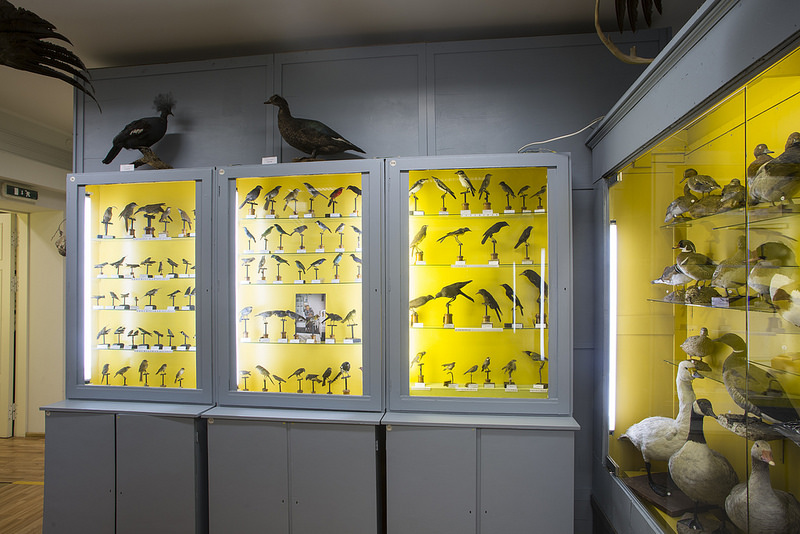
Erik Kessels, The Human Zoo, 2018. The Former Faculty of Biology of the University of Latvia. Photo: Andrejs Strokins
The Zoological Collection of the Museum of the University of Latvia features the usual skeletons, taxidermied bodies, pinned down insects and other animal remains for us humans to gawk and marvel at. Erik Kessels believes that human animals are often as strange and exotic as the ones in zoological displays. To prove his point, he placed found photos inside the exhibition cases, pairing them with the original artifacts in associative and often comical ways. Both male and female individuals of our species are caught preening, mating, eating and performing other rituals.
The odd juxtapositions force us to have a more introspective look at our own species and the deep connections we share with other animals.
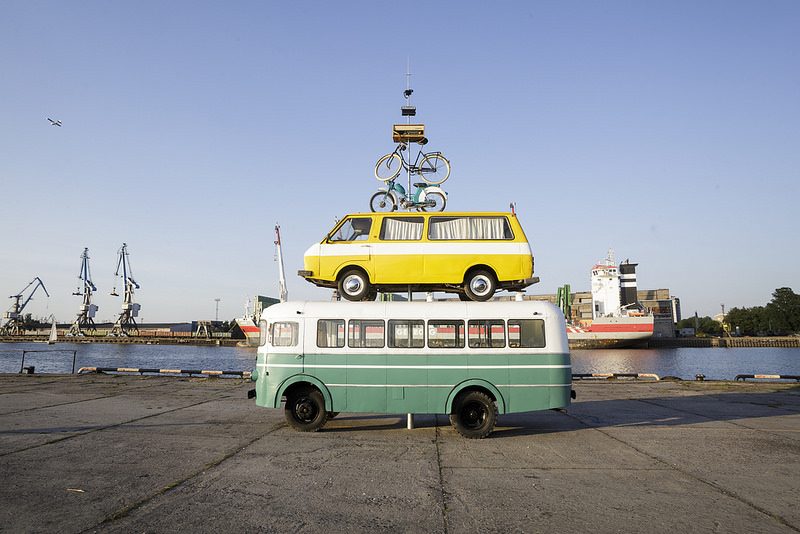
Maarten Vanden Eynde, Pinpointing Progress, 2018. Photo: Andrejs Strokins
Titled Pinpointing Progress, Maarten Vanden Eynde’s sculpture is an homage to the Town Musicians of Bremen, a sculpture based on the story of the Brothers Grimm, in the centre of Riga.
The artist stacked on top of one another technological products that used to be manufactured in Riga and exported all over the USSR and beyond. The objects become smaller and smaller as they reach the top of the sculpture. A bus, car, moped, bike, computer, radio, telephone, camera and a transistor. Pinned on a needle, as if they were insects in a natural history museum.
Progress comes with the promise that we are moving forward, towards a better situation. The faster we get there, it is suggested, the better it is. New inventions swiftly follow one another, often shrinking in size, with nano-technology the ultimate goal. Nanotechnology will potentially have implications on a macro scale. And because we won’t be able to perceive its impact with our unaided human sense, we will have to believe the new forms of progress nanotechnology bring. In this context, information and faith in progress replace material goods as the most valuable resources in capitalist society.
Vanden Eynde’s sculpture wasn’t the only work in the biennial that questioned our age of technoscience…
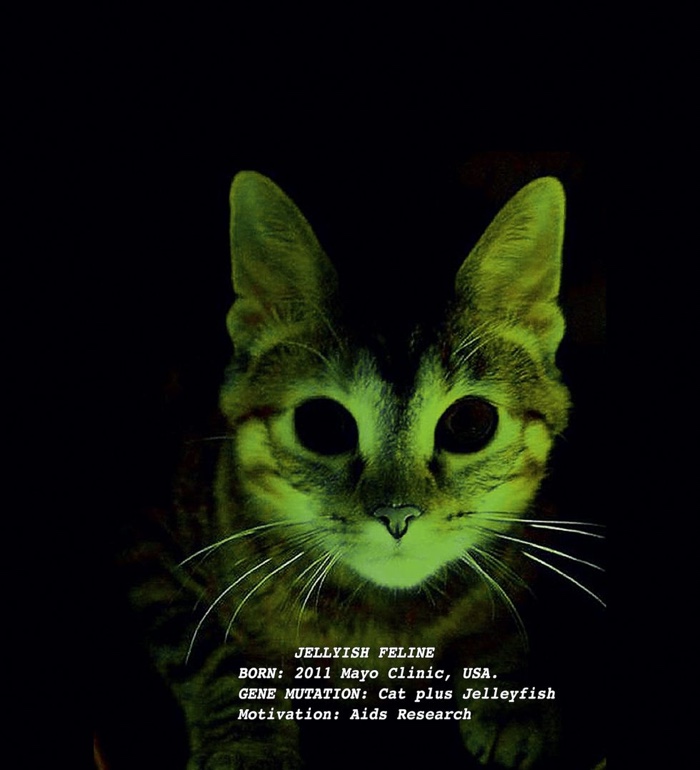
Lynn Hershman-Leeson, Genetically modified cat from The Infinity Engine, 2010
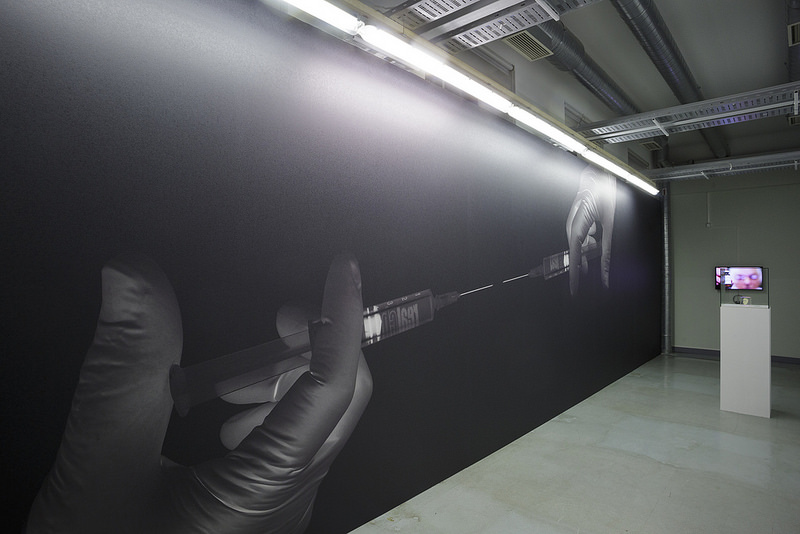
Lynn Hershman-Leeson, Infinity Engine, 2011-2018. Photo: Andrejs Strokins
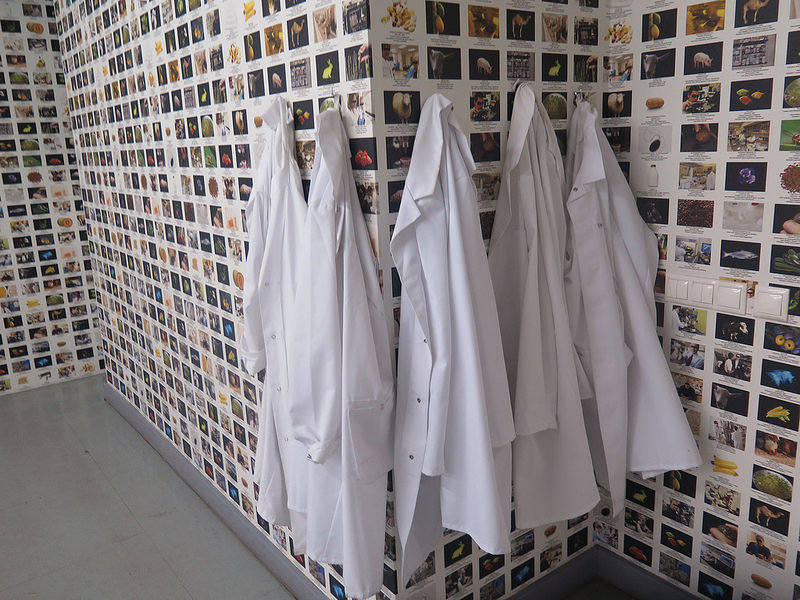
Lynn Hershman-Leeson, Infinity Engine, 2011-2018
Infinity Engine explores the societal and ethical challenges of DNA programming and all the applications it enables, from the production of transgenic organisms to 3D bioprinting of human organs.
In collaboration with reknown scientists, Hershman-Leeson created a functional replica of a genetics lab, complete with printed scaffolds of human noses and ears and scientific equipment.
The installation was fascinating and i wish i had had a full afternoon to explore its informative content. One of the rooms was wallpapered in images of hybrid crops, animals and interiors of biomedical engineering labs across the world. Another room allowed visitors to read files of legal documents related to genetic engineering. The most curious was the speculative ‘capture room’, devised in collaboration with biohacker and molecular biologist Dr. Josiah P. Zayner, in which facial-recognition software captures the images of the visitors, attempts to deduce information about the person’s genetic makeup and adds the data to an evolving composite archetype.
The project points to the possible implications of this kind of genetic research: on the one hand, the astonishing medical breakthroughs; on the other, the new forms of governmental and corporate surveillance it enables. The work also invites us to ponder upon uncomfortable questions: How do these scientific practices challenge our understanding of human identity and life? Who owns the engineered human body parts when human cells and tissue are turned into commodities? How might bio-engineering affect human evolution in a planet that is increasingly uninhabitable?
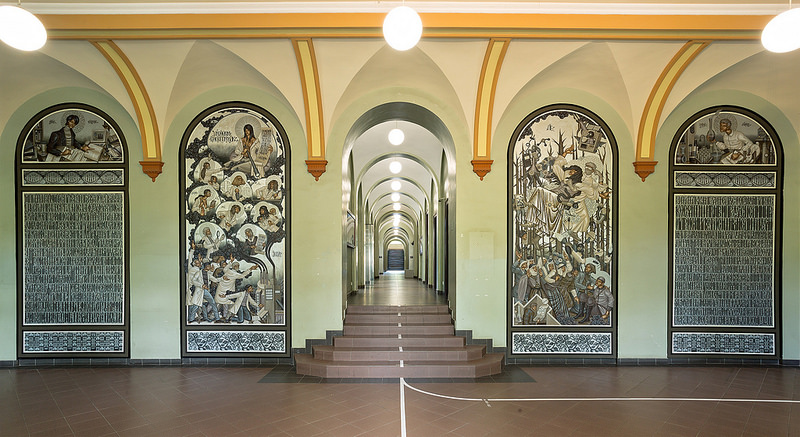
Stelios Faitakis, The New Religion, 2018. Photo: Vladimir Svetlov
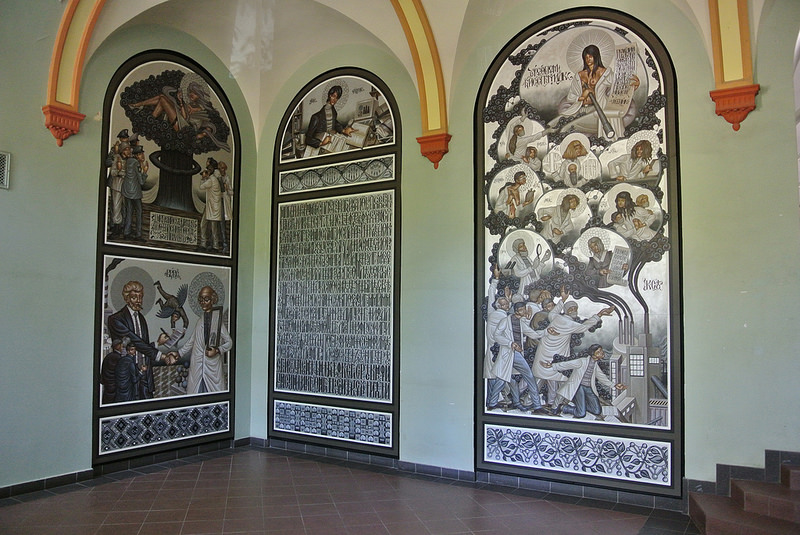
Stelios Faitakis, The New Religion, 2018. Photo: Stelios Faitakis
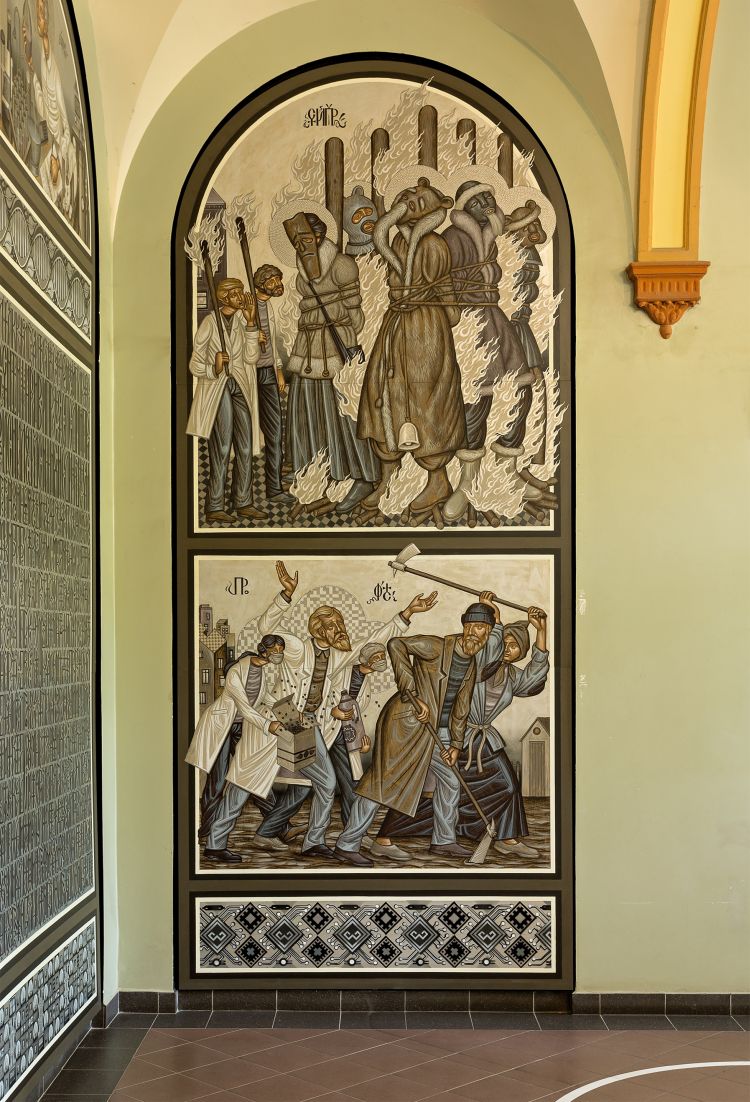
Stelios Faitakis, The New Religion (detail), 2018. At the Former Biological Faculty
Stelios Faitakis created a spectacular site-specific mural for the lobby of the former Faculty of Biology of the University of Latvia.
His work follows the style of Byzantine painting and specifically the iconostases of Orthodox churches – the icon-covered panels that separate the nave from the sanctuary. The figure that dominates the New Religion is the scientist. In his biblical epic the artist raises questions about the central role that techno-scientific progress plays within the value system of Western society.
Faitakis vision of techno-religion is a dark one. Its mural depict scientists signing contracts with pharmaceutical companies, observing a gigantic nuclear mushroom cloud or working calmly next to a rabbit with its skull open.
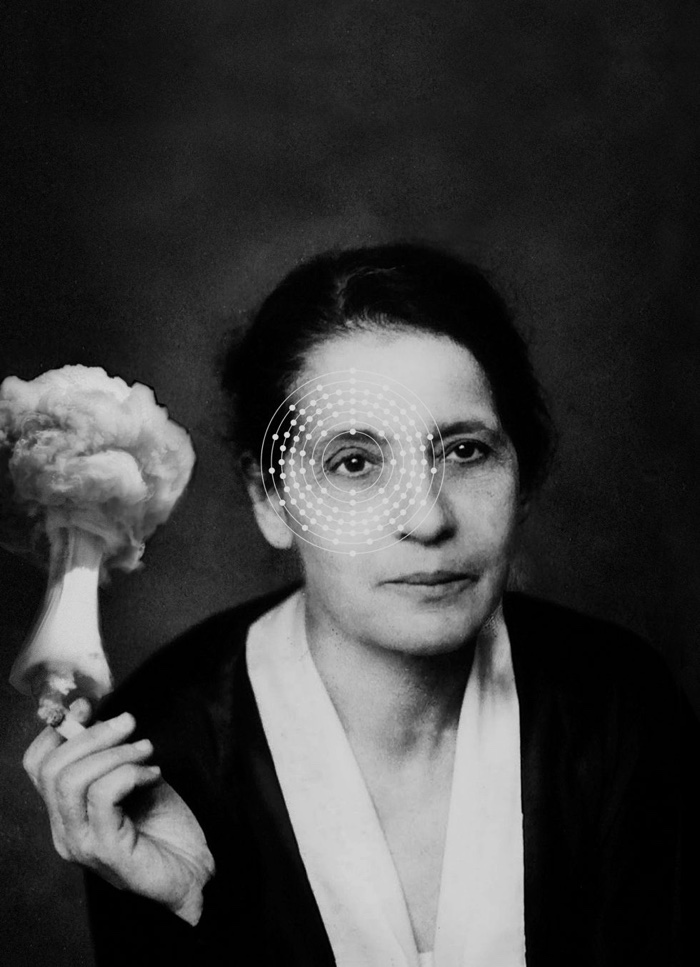
Kerstin Hamilton, The Science Question in Feminism, 2018
Kerstin Hamilton‘s The Science Question in Feminism paid homage to female physicists, chemists and biologists from the Baltic and Nordic region in a series of photomontages that subtly highlighting gender inequality in science. Latvian chemist Lidija Liepina, for example, helped create the first Russian gas mask while she was still a student. Latvian biologist and botanist Magda Staudinger was acknowledged as the collaborator of her husband when he won the Nobel Prize for Chemistry.
The works are inserted inside single vitrines and spread all over the Former Faculty of Biology of the University of Latvia. If you don’t pay attention you might even think they are relics from the glory days of the institution.
While scientific results can arguably be regarded as factual and objective, there is little doubt that the complex structures that surround the scientific knowledge production are socially constructed. These structures have rarely been favourable to women, who systematically have been excluded from formal and informal scientific networks.
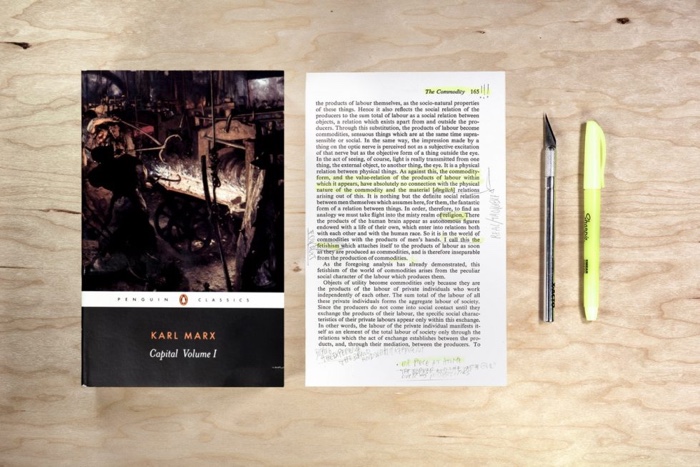
Danilo Correale, Mr. Bojangles…….may also enjoy, 2014-15
Mr. Bojangles…….may also enjoy was a 52 weeklong project where the artist tried to comprehend the ability of the Amazon algorithm to get to know the ideological viewpoint of its customers. Over the course of one year Danilo Correale bought books Amazon suggested to him, starting from a text by Judith Butler. Once the book arrived he ripped off one page and returned the now-damaged book to Amazon. He then proceeded to buy the first book in the list suggested by Amazon, using the refund granted by the e-commerce giant.
In every image, next to the book, lays the page that the artist cut out in order to create a new publication of 52 pages: a symbolic representation of the algorithm that modelled the choices for Mr. Bojangles (Correale’s username on Amazon) and aims to make each and everyone of us a nicely predictable customer.
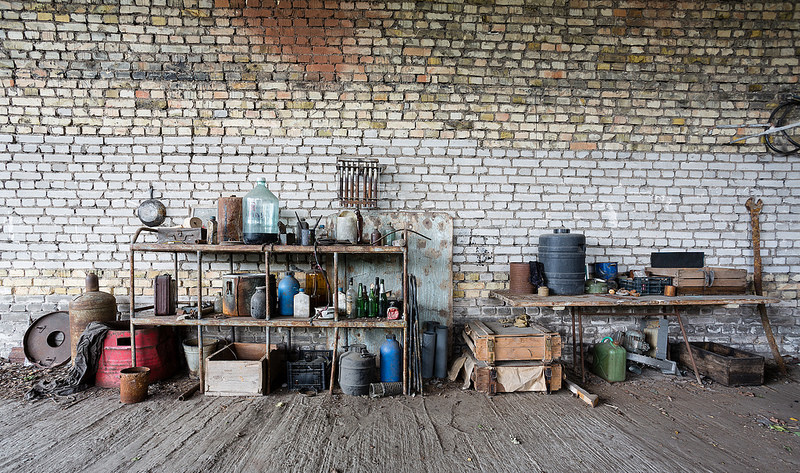
Robert Kusmirowski, IGRA, 2018. Photo: Vladimir Svetlov
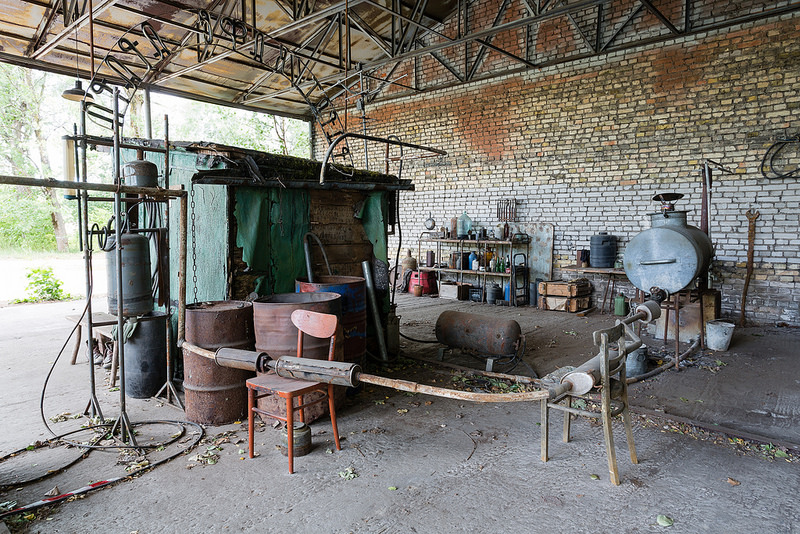
Robert Kusmirowski, IGRA, 2018. Photo: Vladimir Svetlov
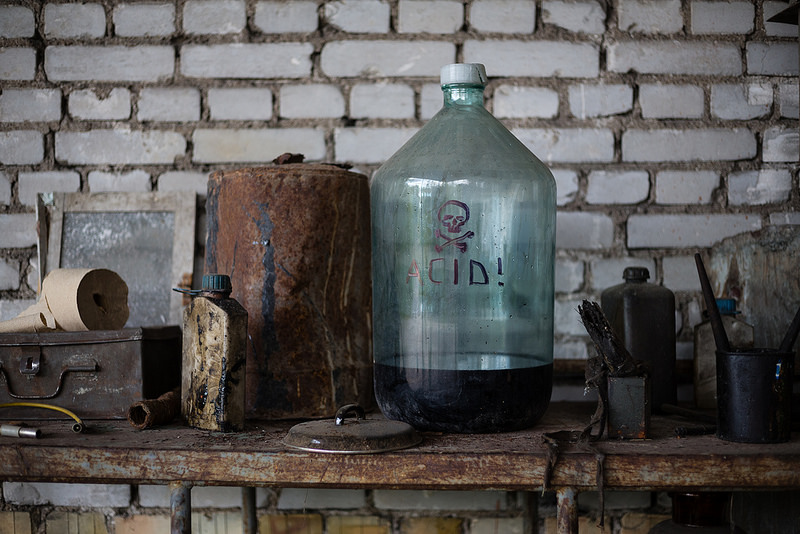
Robert Kusmirowski, IGRA, 2018. Photo: Vladimir Svetlov
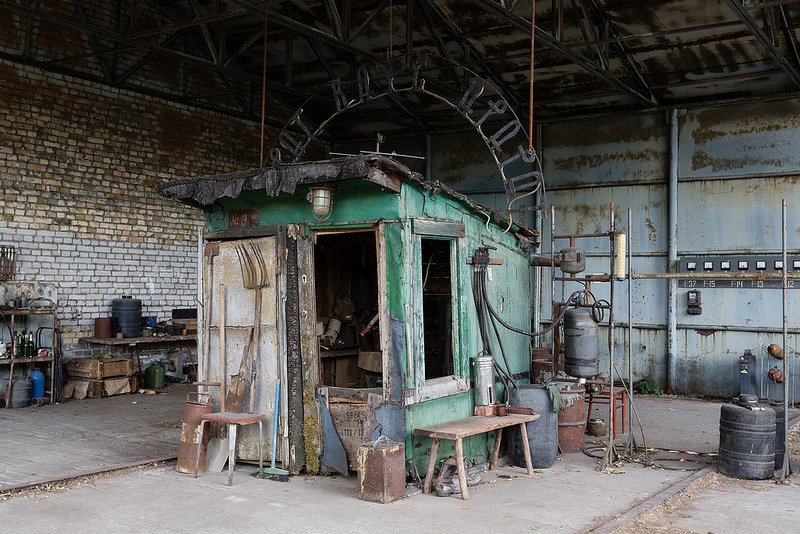
Robert Kusmirowski, IGRA, 2018. Photo: Vladimir Svetlov
I didn’t see this one but i’m a fan of Robert Kuśmirowski…
His astonishing talent consists in turning discarded materials into time capsules that give the illusion of decay and bygone times. The title of the work commissioned especially for the Former Bolschevichka Textile Factory in Riga, IGRA, means ‘plays’ in Polish, and refers to phrases such as ‘playing with death’ and ‘playing with fire’, while simultaneously providing an anagram of ‘Riga’.
IGRA consists of a large machine for producing vodka, referencing the illegal production of moonshine at hidden locations in the forest. The work is constructed from equipment found by the artist: ladles, pipes and piping systems. The last tank of the installation contains 40 litres of vodka, which drips into a glass throughout the duration of the exhibition, creating the illusion of a working vodka distillery.
More works from RIBOCA:
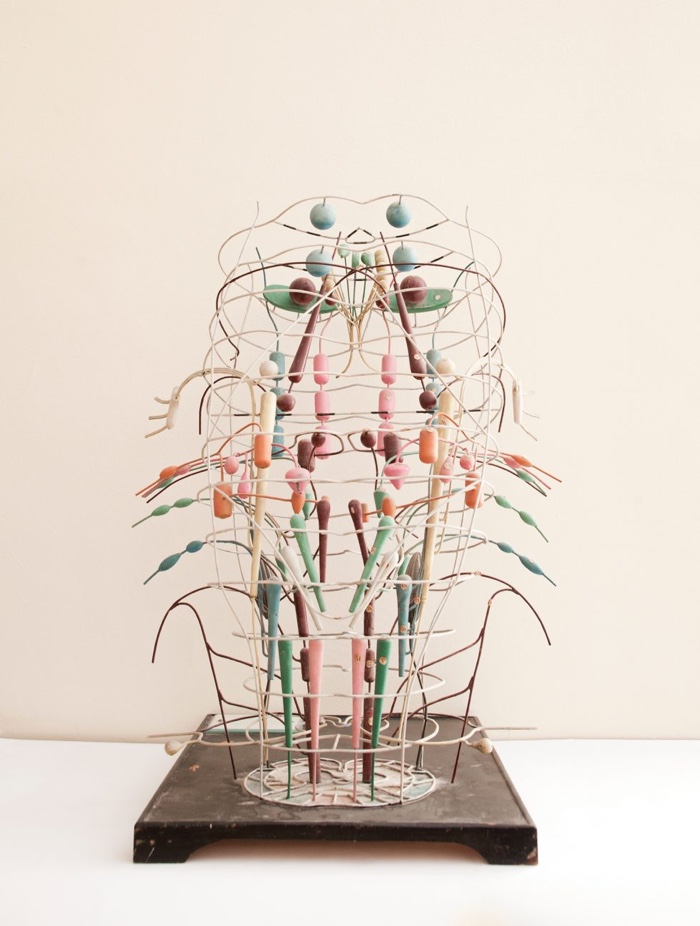
Sputnik Photos, Lost Territories Archive, 2018
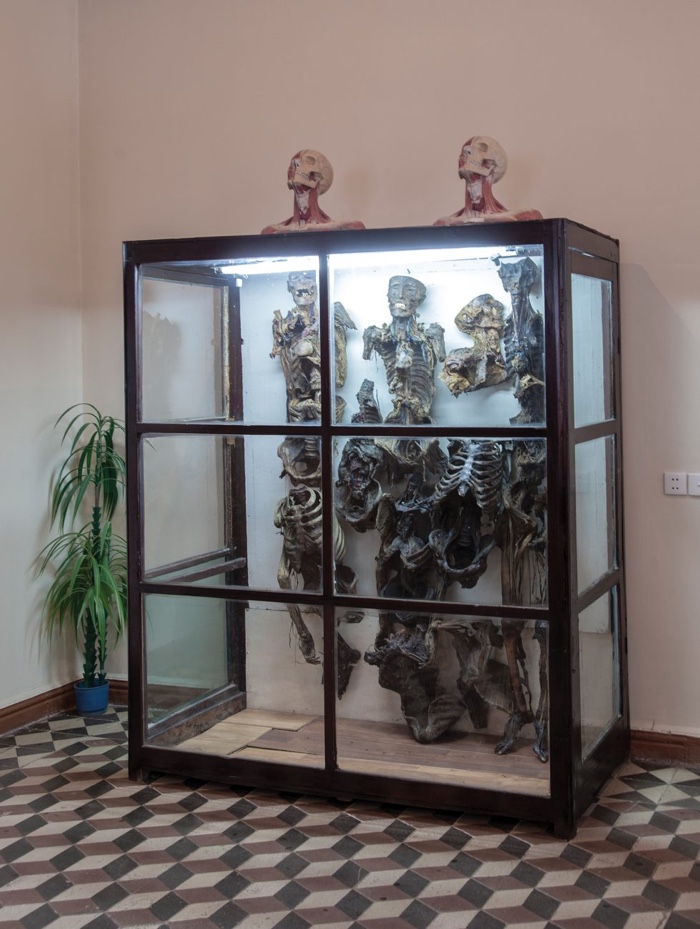
Sputnik Photos, Lost Territories Archive, 2018
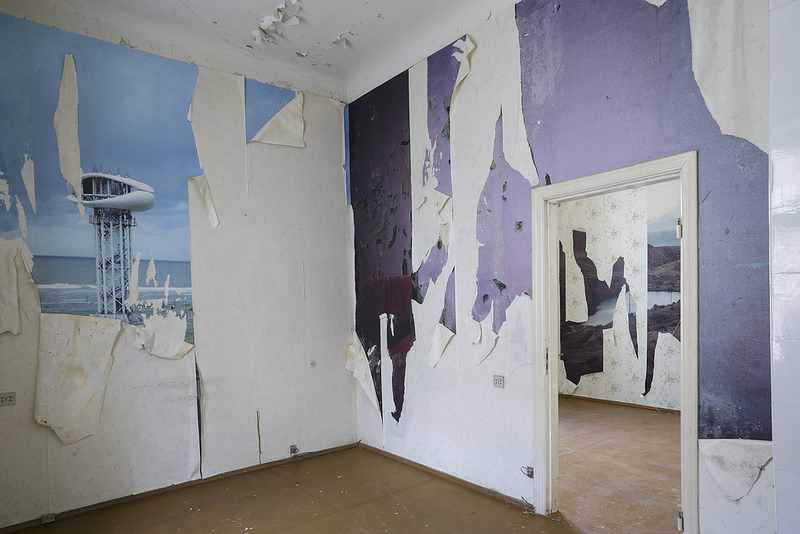
Sputnik Photos, Lost Territories Archive, 2018. Residence of Kristaps Morbergs. Photo: Andrejs Strokins
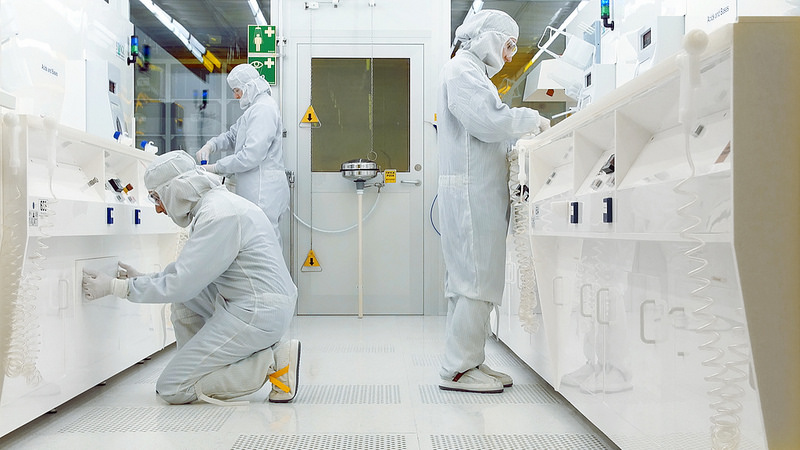
Kerstin Hamilton, Zero Point Energy, 2018
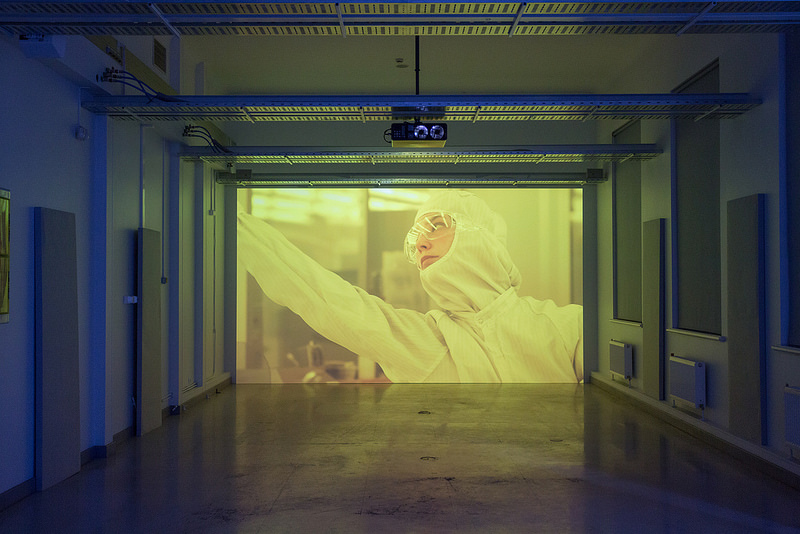
Kerstin Hamilton, Zero Point Energy, 2018. Installation view. Photo: Vladimir Svetlov
Kerstin Hamilton, Zero Point Energy, 2018
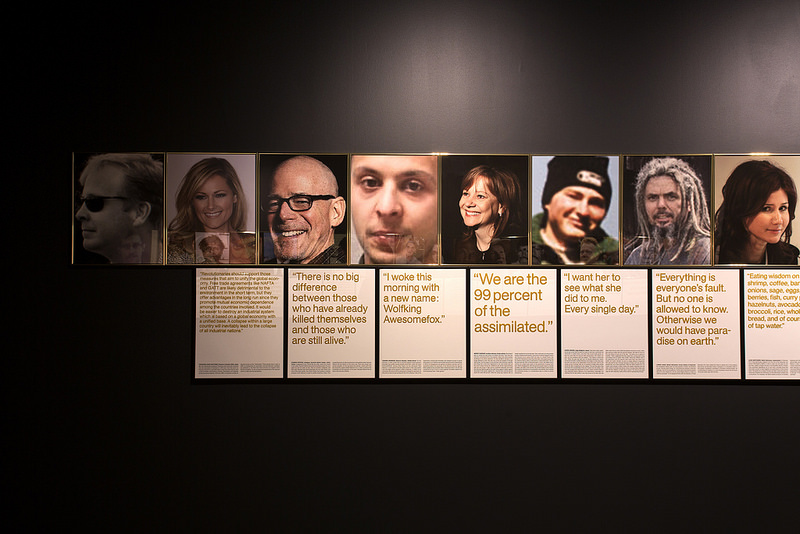
Sven Johne, Anomalies of the early 21st century/Some case studies, 2015. Photo: Vladimir Svetlov
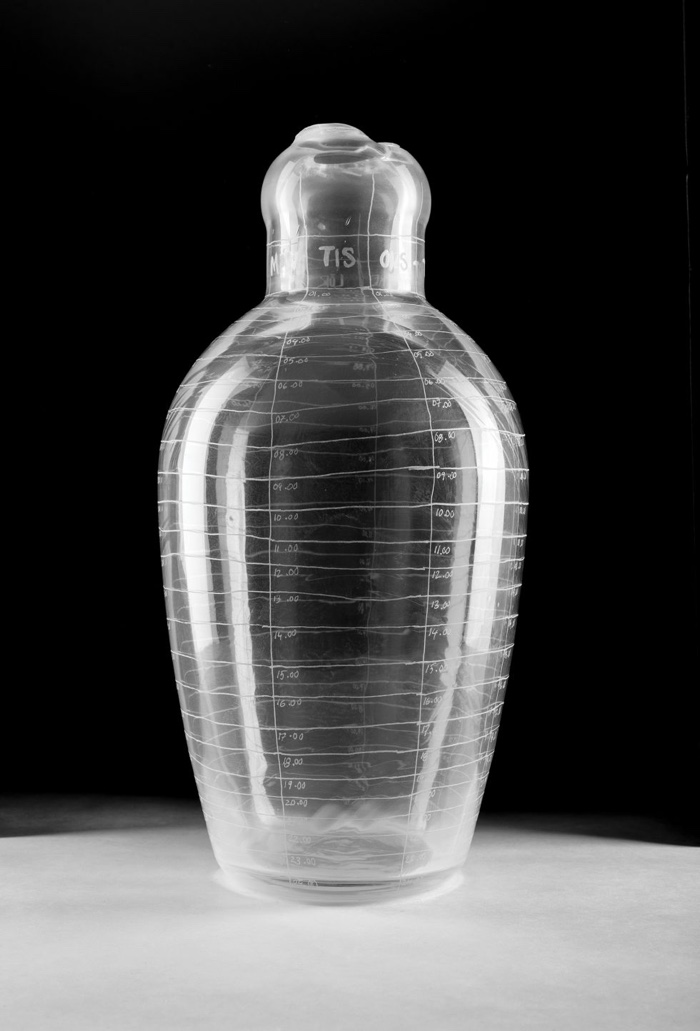
Johanna Gustafsson-Fürst, The Week Has Eight Days, 2018
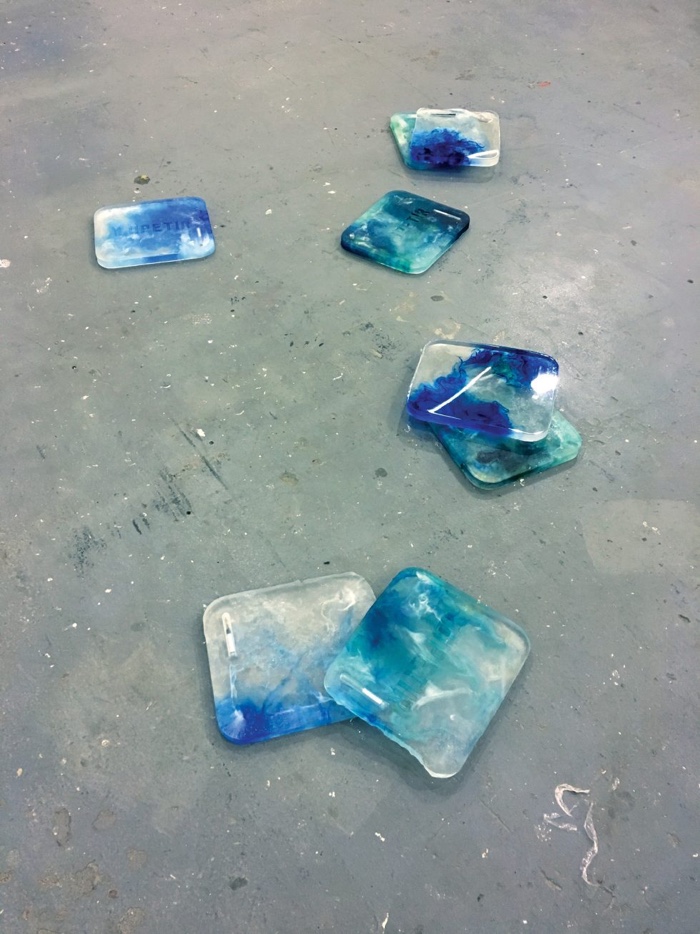
Femke Herregraven, Malleable Regress, 2016-2018
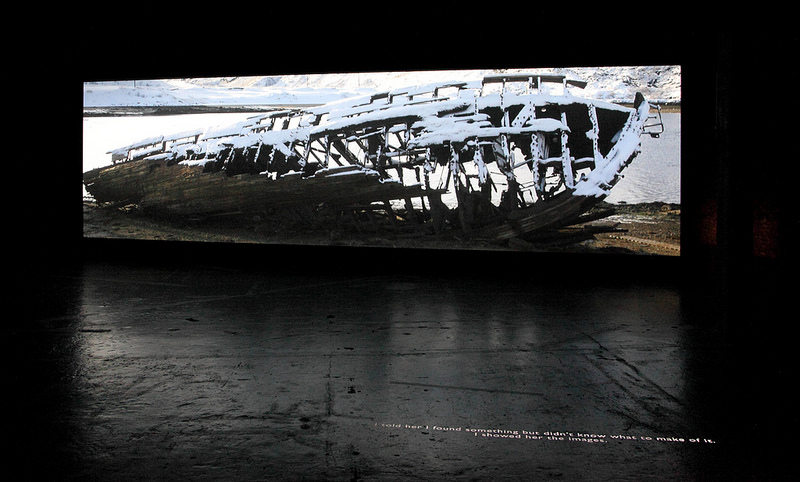
Alexis Destoop, Phantom Sun, 2016. Photo: Dirk Pauwels
